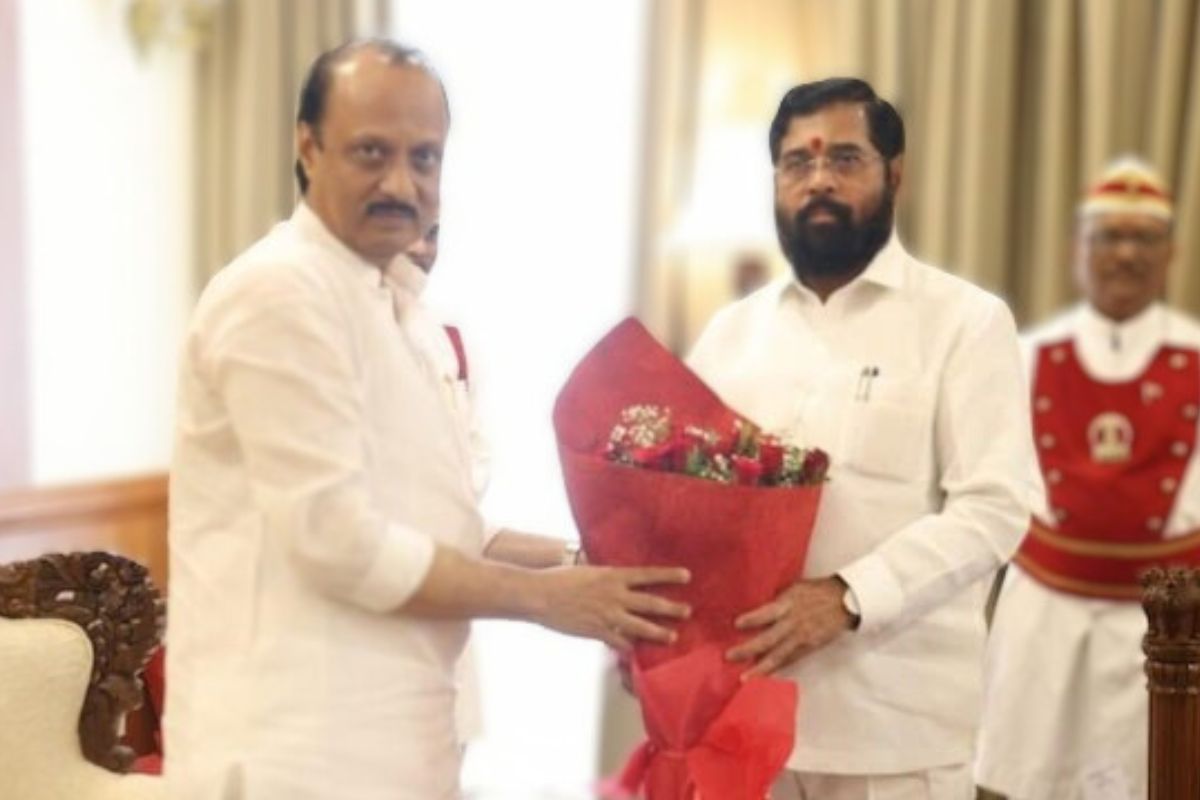Ex-Maha min Anil Deshmukh says Fadnavis coerced him to frame MVA leaders; BJP hits back
Former Maharashtra home minister and NCP(SCP) leader Anil Deshmukh on Thursday made explosive allegations against Deputy Chief Minister Devendra Fadnavis
As Maharashtra’s 13 seats head to the polls in the fifth and final phase of the general election on May 20, the state finds itself at a political crossroads.

Maharashtra CM Eknath Shinde with NCP leader Ajit Pawar
As Maharashtra’s 13 seats head to the polls in the fifth and final phase of the general election on May 20, the state finds itself at a political crossroads. The phase will complete voting for all 48 Lok Sabha seats in the state. The electoral battlefield in Maharashtra sees the Mahayuti alliance, featuring the Bharatiya Janata Party (BJP), the Eknath Shinde faction of the Shiv Sena, and the Ajit Pawar faction of the Nationalist Congress Party (NCP), squaring off against the Maha Vikas Aghadi (MVA), which includes the Congress, the Uddhav Thackeray faction of the Shiv Sena, and the Sharad Pawar faction of NCP.
Campaigning has been vigorous, with Prime Minister Narendra Modi emphasising development and national security, while former chief minister Uddhav Thackeray calls for unity and addresses local grievances, unemployment and the agrarian crisis. Maharashtra, with its mix of urban and rural constituencies, presents a unique electoral battleground. The 13 seats up for grabs in this phase encompass regions with varied priorities and challenges. From the bustling metropolis of Mumbai to the agrarian districts of Marathwada and Vidarbha, each constituency brings its own set of issues and voter concerns to the fore. One of the critical issues has been the agrarian crisis. Years of drought, coupled with fluctuating crop prices, have left farmers in a precarious situation.
The impact of this crisis is particularly felt in the rural constituencies of Vidarbha and Marathwada. The candidates who can convincingly address the agrarian distress and propose viable solutions for sustainable agricultural practices are likely to find favour with the electorate here. Urban constituencies face infrastructure, housing, and job creation issues. Mumbai voters are particularly concerned about housing shortages, transport, pollution, and sustainable development. Another significant factor influencing these elections is the political dynamics between the leading parties and their alliances. The ruling alliance relies on its development agenda, while the opposition focuses on unemployment, economic slowdown, and democratic values. The role of regional parties, such as the factions of Shiv Sena and NCP, cannot be underestimated in this context. Maharashtra has a strong tradition of regional political movements, and their influence in local constituencies is substantial. Their ability to mobilise grassroots support and address hyper-local issues makes them crucial players in this electoral phase.
Advertisement
Young voters, focused on education, employment, and digital infrastructure, seek a progressive and inclusive future. In the final phase of polling in Maharashtra, it is clear that the stakes are high. The results will not only determine the composition of the Lok Sabha but will also set the tone for the state’s political landscape. The 13 seats going to the polls represent more than just electoral battles. They are a microcosm of the broader aspirations and concerns of the state. As voters cast their ballots, they are making a choice about the future direction of their com
Advertisement